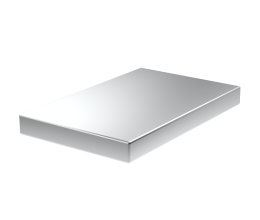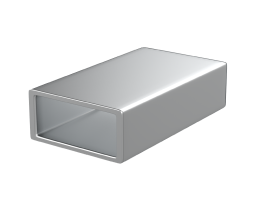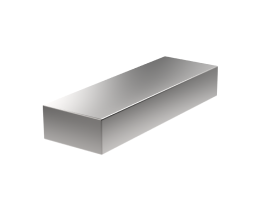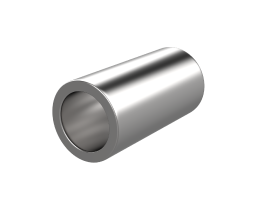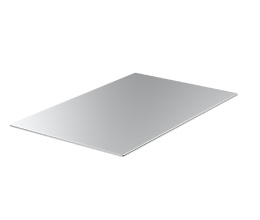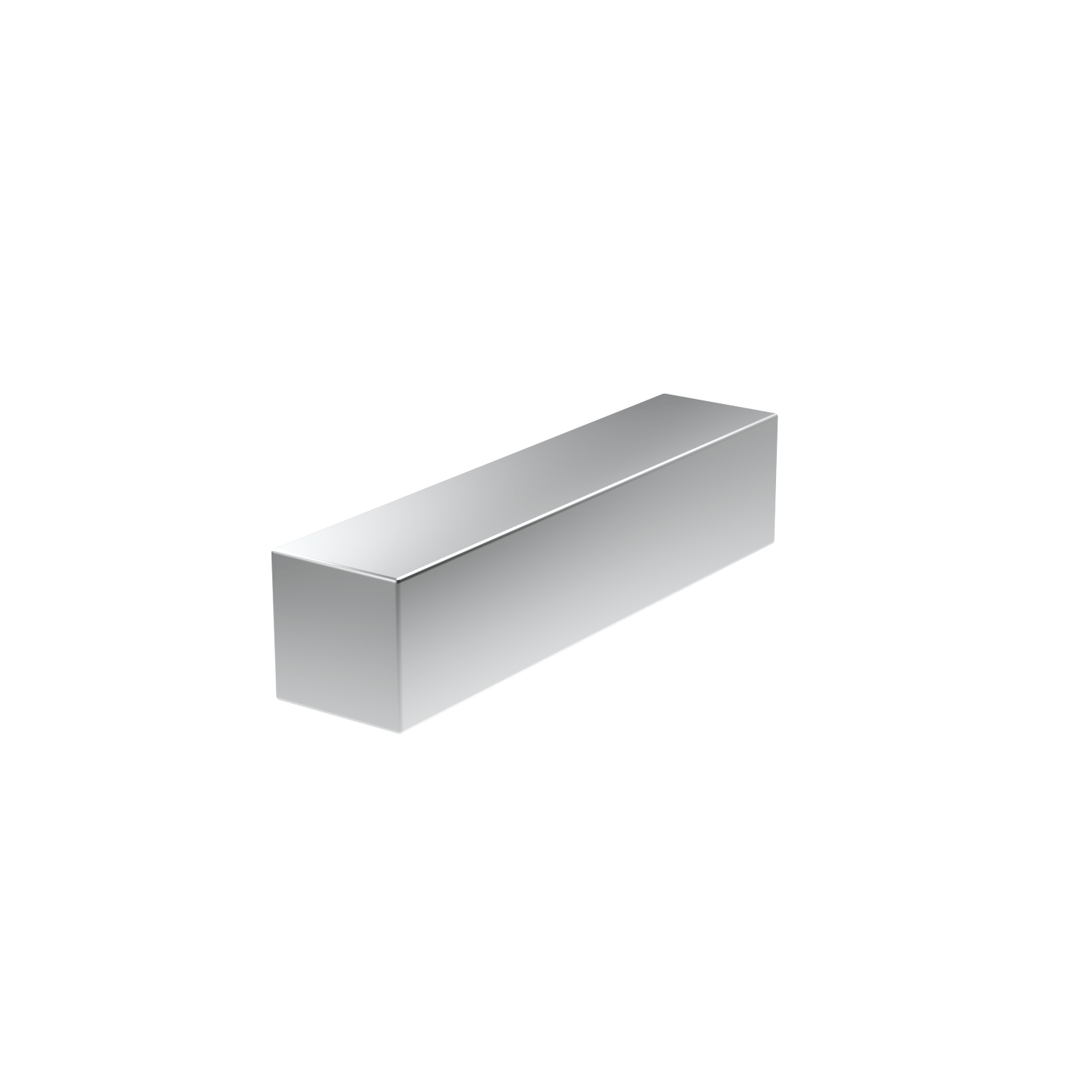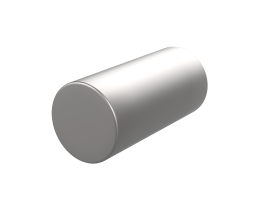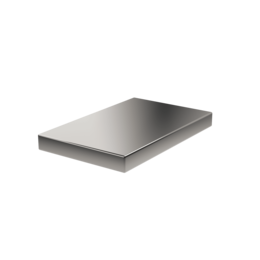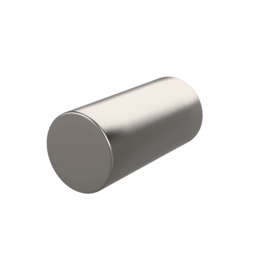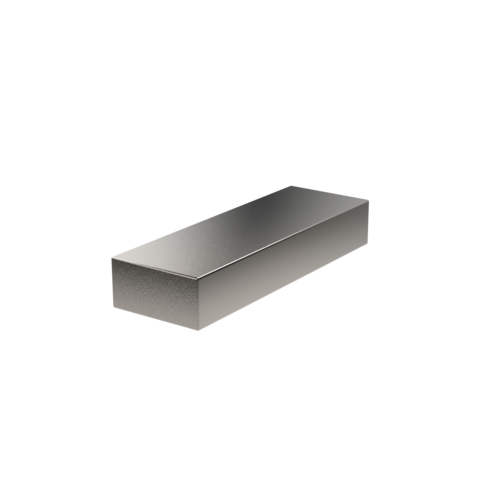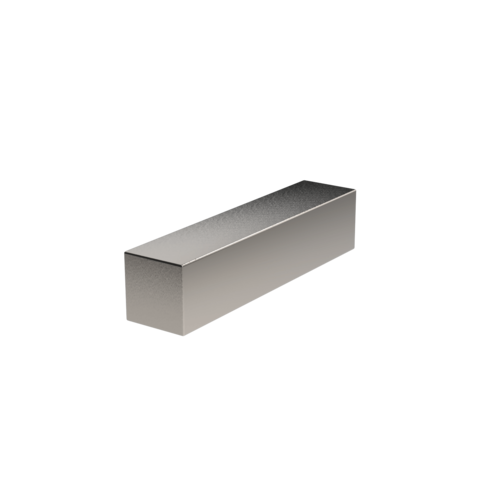Aluminum, a lightweight, durable, and corrosion-resistant metal, is often chosen for various applications due to its versatile properties. However, painting aluminum can be a challenging task due to its non-porous surface and the presence of an oxide layer.
This article aims to provide a comprehensive guide on how to paint aluminum effectively, covering topics such as choosing the right paint, preparing the surface, applying the paint, and maintaining the painted surface.
Whether you’re a professional painter or a DIY enthusiast, this guide will equip you with the knowledge and techniques to achieve a smooth, long-lasting finish on aluminum surfaces.

Choosing the Right Paint for an Aluminum Matte or Satin Finish
| Fact: Did you know bare aluminum instantly creates a thin oxide layer in air? This layer can repel paint, so proper prep work is crucial for a lasting finish! |
The choice of paint plays a crucial role in the durability and finish of the project. The type of paint you select should adhere well to the metal, resist environmental conditions, and provide the desired aesthetic appeal.
Here are some of the most suitable types of paint for aluminum:
Acrylic Latex Paint
Acrylic latex paint is an excellent choice for an aluminum paint job due to its high adhesion, durability, and resistance to flaking and chipping. It’s also water-based, less harmful to the environment, dries quickly, and offers various color options.
Oil-Based Paint
Oil-based paint is another viable option for aluminum paint jobs. It provides a durable and glossy finish that can withstand harsh weather conditions. However, it takes longer to dry than acrylic latex paint, and clean-up requires solvents like mineral spirits.
Direct-to-Metal (DTM) Paint
DTM paint is specifically designed for use on metal surfaces. It contains additives that promote adhesion and inhibit rust, eliminating the need for a self-etching primer in some cases. DTM paint is available in both acrylic and oil-based formulas.
Epoxy Paint
Epoxy paint forms a hard, durable coating that resists chipping, cracking, and peeling. It’s highly resistant to moisture and chemicals, making it ideal for industrial applications or areas exposed to harsh conditions. However, epoxy paint can be challenging to apply and requires careful mixing before use.
Polyurethane Paint
Polyurethane paint forms a hard, durable finish that resists abrasion. It’s suitable for high-traffic areas or surfaces subject to wear and tear. Polyurethane paint is available in various colors and finishes, from matte to high gloss.
Here is a table comparing the durability and cost of different paint types.
| Type of Paint | Expected Lifespan (Years) | Average Cost per Gallon ($) |
| Acrylic Latex | 2-10 | 25-50 |
| Oil-Based | 2-15 | 20-80 |
| Direct-to-Metal (DTM) | 5-10 | 70-85 |
| Epoxy | 10-20 | 45-70 |
| Polyurethane | 5-10 | 35-80 |
Can I Use Acrylic Paint on Aluminum?
Acrylic paint can be used on aluminum surfaces. However, several factors must be considered to ensure a successful application and long-lasting results.
Firstly, the aluminum surface must be properly prepared. This involves thoroughly cleaning the surface with a specialized aluminum degreasing cleaner to remove dirt, grease, or oxidation.
After cleaning, the surface should be rinsed with clean water and allowed to dry completely.
Secondly, it’s important to apply a primer before painting. A primer creates a suitable surface for the paint to adhere to and can help prevent issues such as peeling or flaking.
A self-etching primer is often recommended for aluminum as it chemically reacts with the metal to create a strong bond.
Then apply paint using thin, even coats. Allow each one to dry fully before applying the next. Applying the paint too thickly can lead to issues such as cracking or bubbling.
The choice of acrylic paint can also impact the results. High-quality acrylic paints with a high pigment concentration will generally provide better coverage and durability.
It’s also worth considering the paint’s finish—gloss, semi-gloss, and matte finishes can all look different on aluminum, so choose the one that best suits your project.

Can I Use Latex Paint on Aluminum?
Latex or water-based paint is a viable option for painting aluminum. This type of paint has several characteristics that make it suitable for use on aluminum surfaces.
Firstly, it’s very flexible. Aluminum, being a metal, tends to expand and contract with temperature changes. Its elasticity allows it to move with the aluminum without cracking or peeling, ensuring a durable finish.
It also has excellent adhesion properties. It can form a strong bond with the aluminum surface when applied correctly, reducing the likelihood of the paint peeling off.
However, to ensure optimal adhesion, it’s crucial to properly prepare the aluminum surface by cleaning it using a degreasing cleaner and priming it.
Thirdly, it’s resistant to UV rays, making it an excellent choice for aluminum objects exposed to sunlight. It won’t fade or discolor easily, maintaining its original color for a long time.
Lastly, it’s environmentally friendly and easy to work with. It has low volatile organic compound (VOC) levels, making it safer for both the user and the environment. It also dries quickly and can be cleaned up with water, unlike oil-based paints that require harsh solvents for cleanup.
Here are some more tips:
- Surface preparation: Clean the aluminum surface thoroughly to remove dirt, grease, or oxidation. Use a primer specifically designed for aluminum to ensure good adhesion of the coat of paint.
- Application: Apply the paint in thin coats using a brush, roller, or sprayer. Allow each coat to dry completely before applying the next one.
- Drying time: Allow the final coat of paint to dry for at least 24 hours before handling the painted aluminum object.
- Maintenance: To maintain the painted surface’s appearance, clean it regularly with a mild detergent. Avoid using abrasive degreasing cleaners that can scratch the paint.
| Bonus: For the best results, apply latex paint when the temperature is between 50°F and 85°F. Extreme temperatures can affect the paint’s adhesion and drying time. |
Can I Use Oil-Based Paint on Aluminum?
Oil-based paint can be used on aluminum surfaces, although it’s essential to understand the characteristics and application process to ensure successful results.
To paint an aluminum surface, clean it with warm water and mild detergent to remove dirt, grease, or oxidation. Rinse thoroughly and let it dry.
Next, lightly sand the surface with fine-grained sandpaper and wipe off the dust with a damp cloth. Apply a self-etching primer specifically for metal surfaces to prevent corrosion and provide a base for the paint.
Once the primer is dry, apply oil-based paint in thin, even coats with a brush, roller, or sprayer. Allow each coat to dry before adding the next.
For added protection against harsh weather, consider applying a clear sealer after the paint has fully dried.

Preparing Aluminum for Painting
Preparing aluminum for painting is crucial to ensure a smooth, long-lasting finish. The process involves several stages, each contributing to the final result’s overall quality.
Here’s a step-by-step guide on how to prepare aluminum for painting:
- Cleaning the surface: First, clean the aluminum surface to remove dirt, grease, or oil. Use a mild detergent and warm water. For stubborn stains or heavy grime, use a specialized aluminum cleaner. Rinse the surface thoroughly and allow it to dry completely.
- Removing oxidation: Over time, aluminum naturally forms a layer of oxidation. This oxidation layer can interfere with paint adhesion, leading to peeling or flaking. To remove oxidation, use a solution of 1 part vinegar to 1 part water. Apply the solution with a sponge or cloth, then rinse thoroughly and dry.
- Sanding the surface: Sanding creates a rough surface that allows the paint to adhere better. Use fine-grit sandpaper (180 to 220 grit) to sand the surface lightly. Be sure to sand evenly across the entire surface to avoid creating uneven spots. After sanding, wipe the surface with a damp cloth to remove any dust.
- Applying a primer: A self-etching primer creates a base for the paint to adhere to and helps to prevent corrosion. Choose a primer specifically designed for aluminum. Apply the primer evenly according to the manufacturer’s instructions, and allow it to dry completely before painting.
- Inspecting the surface: Before painting, inspect the surface for any missed spots or uneven areas. If necessary, repeat the sanding and priming process on these areas.

Does aluminum need to be sanded before painting?
Yes. Sanding is a crucial step in the preparation process before painting aluminum.
It creates a physical abrasion on the surface, increasing the surface area and providing a better “grip” for the primer and paint.
Moreover, sanding helps to remove any existing oxidation layer on the aluminum surface, which can interfere with the paint’s adhesion to it.
When sanding aluminum, it’s recommended to use fine-grained sandpaper (between 180 and 220 grit). This will create the necessary abrasion without causing deep scratches that could be visible through the paint.
Here’s a step-by-step guide on how to sand aluminum before painting:
- Clean the aluminum surface to remove any dirt or grease.
- Start sanding with a 180-grit sandpaper. Make sure to sand in the direction of the metal grain.
- Wipe the surface with a cloth dampened with warm water to remove any dust created by sanding.
- Repeat the process with 220-grit sandpaper for a smoother finish.
- Wipe the surface again with a damp cloth and let it dry completely before applying primer or paint.
Always wear appropriate safety gear, including a dust mask and safety glasses, when sanding aluminum to protect yourself from aluminum dust.

Can I paint over anodized aluminum?
Yes. However, painting over anodized aluminum may alter its appearance and potentially reduce the lifespan of the anodized finish.
If the anodized finish is in good condition, it may be more beneficial to leave it as is. However, painting can be a viable option if the finish is worn or if a color change is desired.
Priming Aluminum Before Painting
Do I need to prime aluminum before painting?
Yes. Priming aluminum before painting is a crucial step that should not be overlooked. A primer’s primary purpose is to ensure better paint adhesion to the surface, increase paint durability, and provide additional protection for the material.
Aluminum is a non-porous surface, making it challenging for paint to adhere to. Without a primer, the paint would peel, chip, or flake over time, leading to an unsightly finish and the need for frequent touch-ups or repainting.
Several types of primer are available on the market, but a primer specifically designed for non-porous surfaces is recommended for aluminum. These primers often contain an acid that etches the surface, allowing the paint to bond more effectively with the aluminum.
Priming aluminum involves thoroughly cleaning the aluminum surface with a degreasing cleaner to remove dirt, grease, and oxidation. Then sanding, applying the primer and waiting for it to dry completely.
What happens if you don’t prime aluminum before painting?
Priming is essential when painting aluminum. The paint may not adhere properly without a primer, leading to uneven color and reduced durability.
Primers create a suitable surface, ensuring consistent color and preventing oxidation, which can cause discoloration.
They also protect the paint from environmental factors, extending its lifespan. This includes protecting it from moisture, oxidation, and environmental factors that can cause peeling, cracking, or fading.
Applying Paint on Aluminum
Can I use spray paint on aluminum?
Yes, you can use spray paint on aluminum for a smooth, even finish, but careful preparation is essential.
Choose a spray paint designed for metal, preferably with a built-in primer. Clean the surface thoroughly with a mild detergent or specialized aluminum cleaner for heavy oxidation, then rinse and air dry completely.
If the paint lacks a primer, apply a metal primer and let it dry according to the manufacturer’s instructions.
Use several light coats of spray paint, allowing each coat to dry to avoid drips and runs. Always work in a well-ventilated area and wear a mask and safety glasses for protection.
| Application Tip: Hold the spray can 10-12 inches away and use a steady, sweeping motion for an even coat. |
Can I use a paint roller on aluminum?
Yes. Using a paint roller can be an effective method, particularly for larger surfaces.
It can cover a large area quickly, making it ideal for bigger projects such as aluminum siding or large sheets of aluminum. However, the type of roller used can significantly impact the final result.
There are different types of paint rollers available, each with its own set of characteristics:
- Foam rollers: Ideal for a smooth finish without roller marks. Good for glossy or semi-glossy paints but absorb a lot of paint.
- Nap rollers: Short nap (¼ to ½ inch) for smooth surfaces like aluminum; leaves a fine finish. Long nap for textured surfaces, not typically used for aluminum.
- Textured rollers: Used to create effects, not typically for painting aluminum.
When using a paint roller on aluminum, it’s important to use the right technique.
- Load the roller evenly with paint.
- Apply paint in a ‘W’ pattern, filling gaps without lifting the roller for even distribution.
- Avoid overloading the roller to prevent drips and runs.
- Apply two thin coats instead of one thick one for a smooth finish.
How many coats of paint does aluminum need?
Generally, two coats of paint are usually sufficient for aluminum.
On the other hand, oil-based paints typically provide better coverage than latex or acrylic paints, potentially reducing the number of coats required.
The number of paint coats required for aluminum also depends on the desired opacity, and the color of the original aluminum and the new paint.
- More coats for full opacity; fewer coats for semi-transparent or washed effects.
- More coats are needed for high contrast (light paint over dark aluminum), and fewer coats for low contrast (dark paint over light aluminum).

After Painting Aluminum
Is it necessary to use a sealer after painting aluminum?
Applying a sealer after painting aluminum is not always necessary, but it can provide several benefits that enhance the longevity and appearance of the painted surface.
It protects the paint from external factors such as UV rays, moisture, and physical damage, which can cause fading, chipping, or peeling over time.
Applying a Sealer on Painted Aluminum
Before applying the sealer, ensure the paint is completely dry. Applying sealer over wet paint can lead to a cloudy finish.
Apply the sealer in a thin, even layer. Allow the sealer to dry fully before handling the aluminum.
While using a sealer after painting is not mandatory, it can significantly enhance the durability and appearance of the paint coating.
Therefore, it is a step worth considering, especially for aluminum items exposed to harsh environmental conditions.
What is the drying time for paint on aluminum?
Generally, oil-based paints can take up to 24 hours to dry to the touch, and up to 7 days to fully cure. On the other hand, latex and acrylic resin paints can dry to the touch within a few hours but may take up to 30 days to fully cure.
The drying time for paint on aluminum can vary significantly based on the following:
- Application method: Spray paint tends to dry faster than paint applied with a brush or roller due to the thin, even layer it produces.
- Number of coats: Each additional coat of paint will require extra drying time. It’s crucial to allow each coat to dry fully before applying the next to prevent cracking or peeling.
- Environmental conditions: Paint dries faster in warm, dry conditions and slower in cold, humid conditions. Ideal painting conditions are typically around 70 degrees Fahrenheit with a relative humidity of around 50%.
- Surface characteristics: A smooth, primed surface will allow paint to dry more quickly than a rough, unprimed surface.
Here is a table comparing drying times for various paint types:
| Type of Paint | Touch Dry Time (Hours) | Full Cure Time (Days) | Recoat Time (Hours) |
| Acrylic Latex | 1-2 | 14-30 | 4-6 |
| Oil-Based | 6-8 | 7 | 24 |
| Direct-to-Metal (DTM) | 4-6 | 10 | 4-10 |
| Epoxy | 4-6 | 7-24 | 48 |
| Polyurethane | 6-8 | 7-12 | 16 |
Special Considerations When Painting Aluminum
Can I paint aluminum in cold weather?
Yes, but it presents a unique set of challenges that require careful consideration and planning. The primary concern is the impact of low temperatures on the drying and curing process of the paint.
Most paints have a minimum temperature threshold for application. This is typically around 50 degrees Fahrenheit (10 degrees Celsius) for many common paints. Applying paint below this temperature can lead to poor adhesion, longer drying times, or uneven finish.
If you must paint aluminum in cold weather, consider the following tips:
- Use cold-weather paint
- Monitor weather conditions and avoid painting if precipitation is expected, as moisture can negatively affect the paint.
- Keep your paint in a warm location until you’re ready to use it. Cold paint is thicker and harder to apply evenly.
- Warm the aluminum surface before painting. You can do this using a heat gun or infrared lamp. Be careful not to overheat the surface, as this can cause other issues.
How do I prevent paint from peeling off aluminum?
Preventing paint from peeling off aluminum involves a combination of proper surface preparation, the right choice of paint and primer, and appropriate application techniques. Here are some key steps and considerations:
- Clean aluminum with detergent or aluminum cleaner, rinse, and dry.
- Use fine-grit sandpaper to create a rough texture for better paint adhesion, and remove dust.
- Apply self-etching primer for improved adhesion; let it dry completely.
- Use paint designed for metal, like acrylic latex, for flexibility and durability.
- Apply thin, even coats of paint, letting each dry fully; avoid extreme temperatures and humidity.
- Regularly check for damage and address promptly to prevent deterioration.
Removing Paint from Aluminum
Removing paint from aluminum surfaces requires a careful approach to avoid damaging the underlying material. Here are the steps and considerations involved in this process:
First, ensure you have the necessary safety equipment, including gloves, safety glasses, and a respirator mask. Working in an airy area is also crucial to avoid inhaling potentially harmful fumes from the paint remover.
Then choose a paint remover specifically designed for metal. Avoid removers that contain harsh chemicals like methylene chloride, which can damage aluminum.
Apply the paint remover to the surface using a brush. Follow the manufacturer’s instructions regarding the thickness of the application and the time it should be left on the surface.
After the recommended time, gently remove the paint using a plastic scraper. A plastic scraper is preferred over metal to prevent scratching the aluminum surface.
Once all the paint has been removed, clean the surface with a mild detergent and warm water to remove any residue from the paint remover. Rinse thoroughly and dry the surface.
If any paint remains, lightly sand the surface with fine-grained sandpaper. Be careful not to sand too aggressively as this can scratch the aluminum.
The Key to a Successful Paint Job
Painting aluminum involves several steps, including choosing the right type of paint, preparing the aluminum surface, applying a self-etching primer, and finally, painting.
The type of paint used can vary from acrylic, and latex, to oil-based, each with its own advantages and considerations.
Proper preparation of the aluminum surface, which may involve cleaning and sanding, is crucial for the paint to adhere properly.
Priming is also an essential step to ensure a smooth and durable finish. Depending on the desired finish, paint can be applied using various tools, such as a paint roller.
Removing paint from aluminum should be done carefully using appropriate methods and safety precautions.
